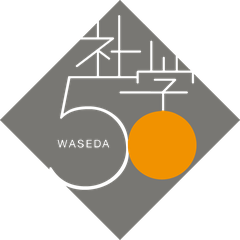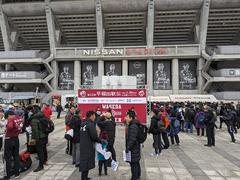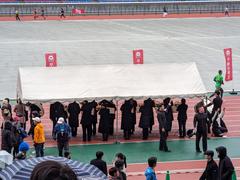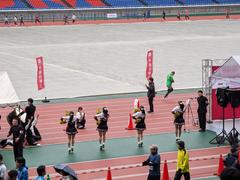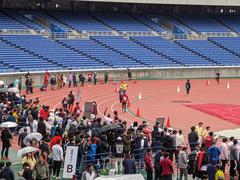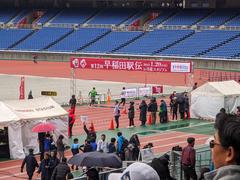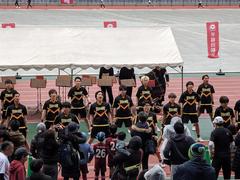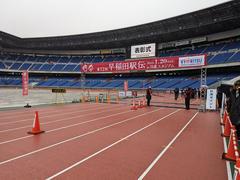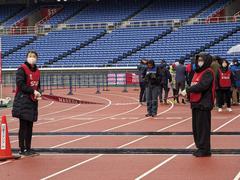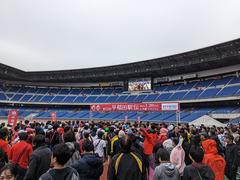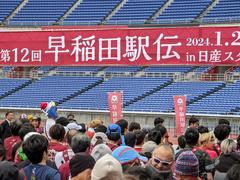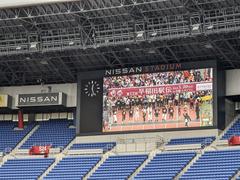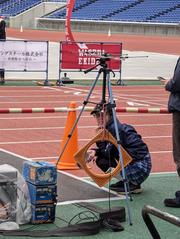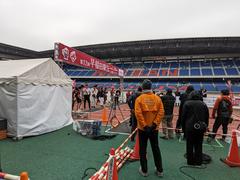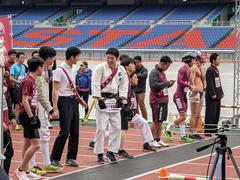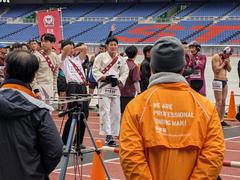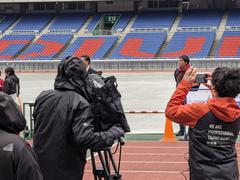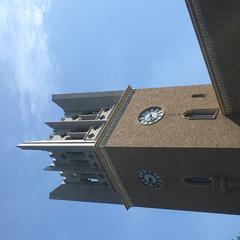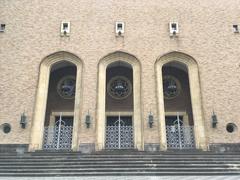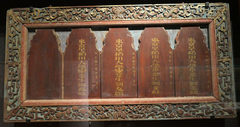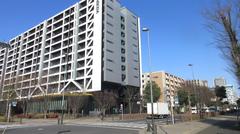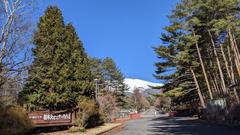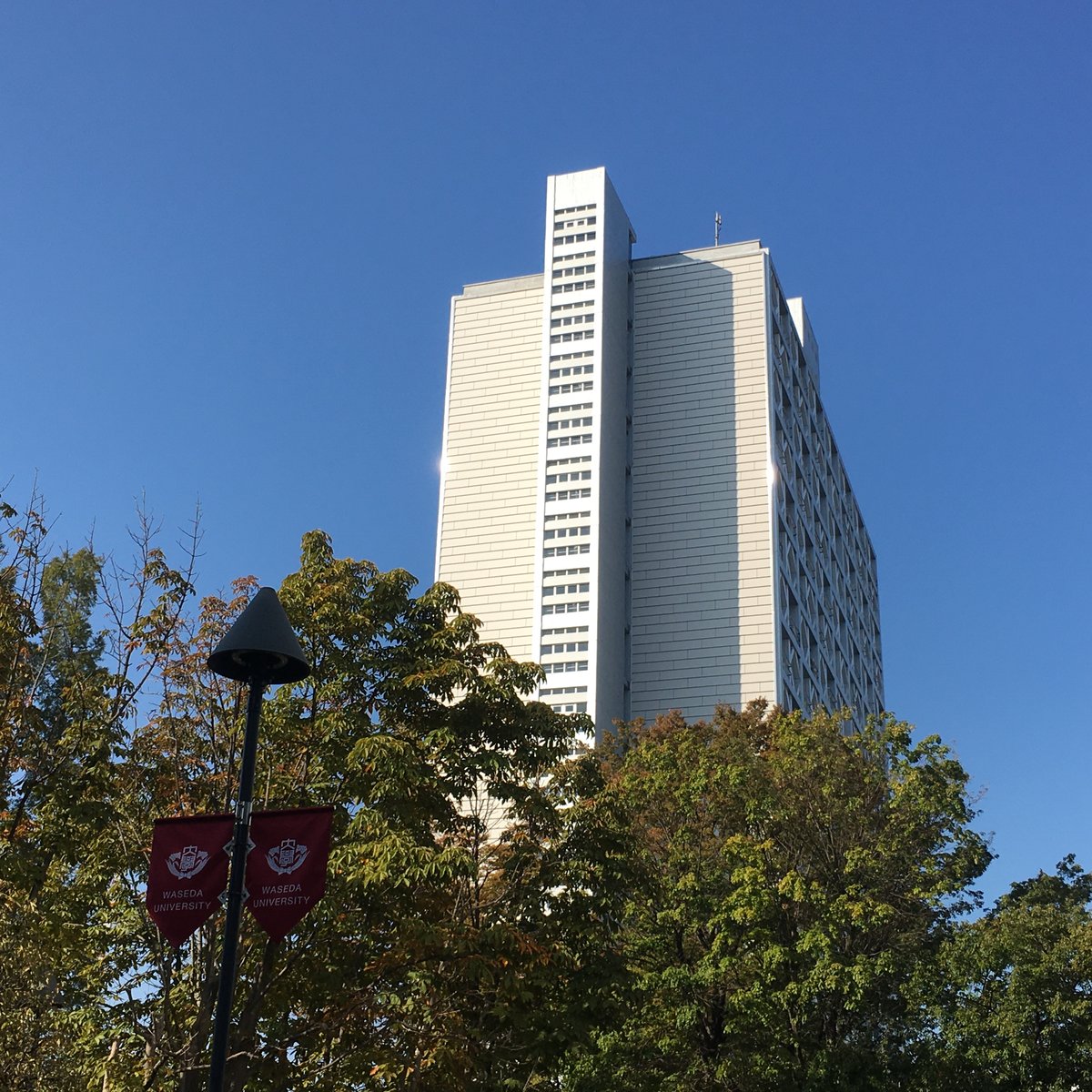
Waseda University Tokyo Visiting Hours, Tickets, and Historical Sites Guide
Date: 14/06/2025
Introduction
Waseda University, nestled in Tokyo’s lively Shinjuku district, is one of Japan’s premier private universities and a fascinating destination for those interested in the city’s academic, cultural, and architectural heritage. Established in 1882 by Shigenobu Okuma, a revered statesman and former Prime Minister, the university was founded to cultivate leaders for a modernizing Japan, blending Western and Eastern educational philosophies. Today, Waseda stands as a symbol of academic excellence, global vision, and historical significance, with landmarks such as the Okuma Auditorium and Okuma Garden drawing visitors from around the world. This guide provides comprehensive information on visiting hours, ticketing, accessibility, campus highlights, and nearby attractions, ensuring an enriching experience for tourists, academic enthusiasts, and prospective students alike. For the latest updates and official guidance, refer to the Waseda University Visitor Information page and ShanghaiRanking.
Table of Contents
- Introduction
- Historical Overview
- Visiting Waseda University: Practical Information
- Campus Highlights
- Student Life and Culture
- Dining, Shopping, and Facilities
- Art, Museums, and Events
- Getting to Waseda University
- Visitor Support and Accessibility
- FAQ
- Summary & Recommendations
- References
Historical Overview
Founding and Early Development
Founded in 1882 by Shigenobu Okuma, Waseda University began as Tokyo Senmon Gakko (Tokyo College), aspiring to foster leaders for Japan’s modernization. Okuma’s educational philosophy emphasized “independence of learning,” “utilization of knowledge,” and the “creation of good citizenship,” harmonizing global perspectives with Japanese values (ShanghaiRanking; Reed Japan).
Expansion and Academic Evolution
Through the 20th century, Waseda transitioned from a college to a comprehensive research university, boasting thirteen undergraduate and twenty-four graduate schools and multiple research centers (ShanghaiRanking). Notable landmarks, including the mission statement monument (installed in 1937), underscore the university’s commitment to academic freedom and social responsibility (Edarabia).
Internationalization and Global Impact
Waseda is renowned for its international outlook, hosting over 8,350 international students from 121 countries and collaborating with more than 400 partner institutions worldwide (Reed Japan; ShanghaiRanking). Milestones such as the “Second Century Declaration” (2007) and “Vision 150” (2012) reflect its pursuit of global academic leadership (Edarabia).
Visiting Waseda University: Practical Information
Visiting Hours and Tickets
- Campus Grounds: Open daily from 9:00 AM to 5:00 PM, with free access to outdoor areas and public landmarks such as Okuma Auditorium and Okuma Garden.
- Museums and Special Exhibitions: Some venues (e.g., Tsubouchi Memorial Theatre Museum, special exhibitions) may require tickets or advance reservations. Always check the official visitor information page before your visit.
Guided Tours and Virtual Visits
- Self-Guided Tours: Visitors can explore the campus at their own pace using printed or downloadable maps (Waseda Campus Map PDF).
- Guided Tours: Book 60-minute English-language tours led by students via the Waseda Univ Tour site. Tours require advance reservation.
- Virtual Tours: For remote visitors, Waseda offers immersive virtual campus tours with interactive features.
Accessibility and Travel Tips
- Getting There: Easily reached via Waseda Station (Tokyo Metro Tozai Line), Takadanobaba Station (JR Yamanote Line), and the Toden Arakawa (Sakura) Tram Line (Tokyo Weekender).
- Campus Facilities: Wheelchair-friendly buildings, ramps, elevators, and accessible restrooms ensure a comfortable visit for all.
- Tips: Use public transportation, as parking is limited; consider visiting in spring or autumn for pleasant weather and campus events.
Nearby Attractions
- Shinjuku Gyoen National Garden: A blend of Japanese, English, and French garden styles.
- Takadanobaba: Lively area with cafes, ramen shops, and nightlife.
- Meiji Shrine: Accessible by train, offering a tranquil spiritual retreat.
- Shōfuku-ji Temple & Zoshigaya Cemetery: Historical sites nearby (Visit Waseda).
Photographic Spots
- Okuma Auditorium: Iconic red brick and clock tower.
- Okuma Garden: Serene landscape, especially during cherry blossom season.
- Mission Statement Monument: Near the main gate, a meaningful symbol for photos.
Campus Highlights
Okuma Auditorium and Clock Tower
Built in 1927 and named after the university’s founder, the Okuma Auditorium is a symbol of Waseda’s tradition and resilience, surviving WWII and serving as a venue for ceremonies and cultural events. Its 38-meter clock tower is a popular photo spot (Waseda University History).
Visiting Hours: Grounds open daily 8:30 AM–6:00 PM. Interior tours by prior appointment.
Okuma Garden
A tranquil Japanese garden behind the auditorium, originally part of Okuma’s residence and opened to the public in the early 20th century. Features a pond, seasonal flora, and peaceful walking paths (Okuma Garden Waseda).
Visiting Hours: Daily 9:00 AM–5:00 PM. Free admission.
Waseda University Library
The Central Library is among Japan’s largest, housing over 5 million volumes. Its blend of modern and traditional architecture makes it a scholarly landmark (Waseda University Wikipedia).
Visiting Hours: Mon–Fri 9:00 AM–9:00 PM; Sat 9:00 AM–5:00 PM; closed Sundays/national holidays. Register at the entrance.
Haruki Murakami Library (Waseda International House of Literature)
This literary destination, dedicated to renowned Waseda alumnus Haruki Murakami, features manuscripts, memorabilia, and unique architecture (Tokyo Cheapo: The Strange Library).
Hours: Tue–Sun 10:00 AM–6:00 PM, closed Mondays. Free admission.
Waseda Shrine
A small Shinto shrine near the main gate, dedicated to learning and visited by students praying for academic success. The annual festival attracts both university and local communities (Visit Waseda: 7 Must-Do Things).
Open: Dawn to dusk.
Student Life and Culture
Waseda’s campus life is vibrant, with over 600 student clubs, a renowned sports culture (notably the baseball rivalry with Keio University), and a cosmopolitan atmosphere thanks to the large international student body. The School of International Liberal Studies (SILS) is especially popular among global students (Japan Travel: Waseda University).
Dining, Shopping, and Facilities
- University Co-Op Store: Purchase official merchandise, books, and souvenirs.
- Cafeterias: Affordable Japanese and international cuisine with vegetarian/vegan options.
- Okuma-dori Street: Lined with eateries, from ramen to vegan restaurants (Tokyo Weekender).
Art, Museums, and Events
- Tsubouchi Memorial Theatre Museum: Dedicated to Japanese and international drama history.
- Waseda History Museum: Chronicles the university’s evolution.
- Aizu Museum & Waseda Sports Museum: Focus on art and sports.
- Events: The annual Waseda Festival, Winter Solstice Festival, and public lectures are major highlights (Tokyo Cheapo: Events in Waseda).
Getting to Waseda University
- By Metro: Waseda Station (Tokyo Metro Tozai Line) and Takadanobaba Station (JR Yamanote Line).
- By Tram: Waseda stop (Toden Arakawa/Sakura Tram Line).
- By Bus: Bus 77 connects Shinjuku and Waseda.
- Maps: Download campus maps.
Visitor Support and Accessibility
- Accessibility: Wheelchair-friendly with support services available (Waseda Univ Tour).
- Health Support Center: On-campus emergency care.
- Lost & Found: Managed by campus administration.
- Wi-Fi: Free campus Wi-Fi in most areas.
- Language: English signage is prevalent; many staff and students speak English.
Frequently Asked Questions (FAQ)
Q: What are the general visiting hours?
A: Most facilities are open 9:00 AM to 5:00 PM, with some variations.
Q: Is campus entry free?
A: Yes, general entry is free. Some exhibitions or museums may charge fees.
Q: Are guided tours available?
A: Yes, reserve online for free guided tours.
Q: Is the campus accessible?
A: Yes, with ramps, elevators, and support for visitors with disabilities.
Q: Can I take photographs?
A: Photography is permitted outdoors; check individual building guidelines.
Q: What are nearby attractions?
A: Shinjuku Gyoen, Takadanobaba, Shōfuku-ji Temple, and Zoshigaya Cemetery.
Summary of Key Points and Recommendations
Visiting Waseda University offers a unique insight into Japan’s academic legacy and vibrant campus culture. With free access to iconic sites like Okuma Auditorium, Okuma Garden, and the Haruki Murakami Library, plus well-developed accessibility and guided tours, Waseda suits international tourists, students, and history enthusiasts alike. The dynamic Waseda neighborhood, with its blend of tradition, youth culture, and culinary variety, further enriches the experience. For up-to-date details on hours, tickets, and events, consult the Waseda University Visitor Information page, Tokyo Cheapo, and Visit Waseda. Enhance your visit with the Audiala app for personalized guides and stay connected through our social media and related posts.
References
- Waseda University Visitor Information page
- ShanghaiRanking: Waseda University
- Reed Japan: Waseda University
- Edarabia: Waseda University
- Visit Waseda: Top 10 Notable Alumni
- Waseda University History
- Okuma Garden Waseda
- Tokyo Cheapo: Waseda
- Japan Travel: Waseda University
- Waseda Campus Tours
- Tokyo Weekender: Waseda Neighborhood Guide
- Waseda Campus Map PDF
- Waseda Univ Tour
- Waseda Student Support
- Visit Waseda: Exploring Waseda University & Neighborhood
- Tokyo Cheapo: The Strange Library
- Visit Waseda: 7 Must-Do Things

